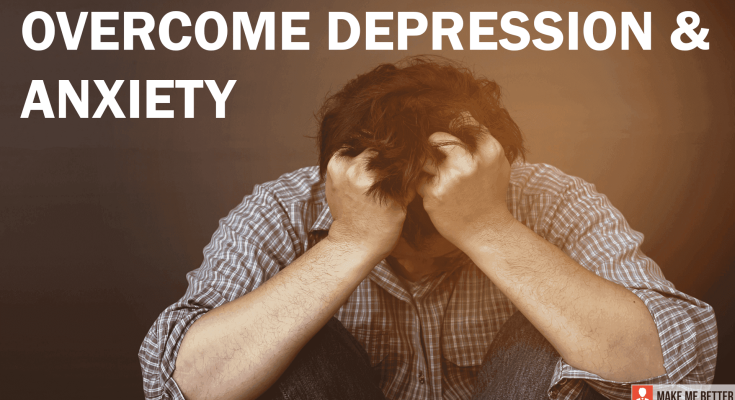In today’s fast-paced, hyperconnected world, anxiety, depression, and stress have become widespread challenges affecting millions across all age groups and walks of life. The World Health Organization reports that over 300 million people globally suffer from depression, while anxiety disorders affect more than 275 million. Add to that the increasing stress levels from work, finances, relationships, and global crises — it’s clear that mental health management has never been more critical.
Understanding how to effectively manage these conditions is not only essential for improving day-to-day life but also for long-term health and well-being. Mental health doesn’t improve by accident—it improves with consistent, intentional effort. In this article, we’ll explore 7 evidence-based, practical tips and strategies to manage anxiety, depression, and stress. These are not quick fixes but sustainable tools that empower individuals to reclaim control over their minds and emotions.
1. Prioritize Physical Health to Boost Mental Health
It’s often said that the mind and body are connected—and that couldn’t be more accurate. When your body is cared for, your brain functions better, your stress tolerance improves, and your mood stabilizes.
A. Exercise Regularly
- Why it helps: Exercise releases endorphins—natural chemicals in your brain that elevate mood.
- Science-backed benefits: Studies show that moderate physical activity (like walking, swimming, or yoga) reduces symptoms of both anxiety and depression.
- Recommended: Aim for 30 minutes of moderate activity, 5 times per week.
B. Improve Sleep Hygiene
- Sleep and stress are intricately linked. Poor sleep can trigger or worsen mental health issues.
- Tips for better sleep:
- Stick to a regular sleep schedule.
- Avoid caffeine after 2 PM.
- Limit screen time at least one hour before bed.
- Create a relaxing bedtime ritual (e.g., reading, warm bath, soft music).
C. Eat a Balanced Diet
- Foods high in processed sugar and unhealthy fats can lead to mood crashes.
- Focus on:
- Whole grains
- Lean proteins
- Leafy greens and colorful vegetables
- Omega-3 fatty acids (found in fish, nuts, and seeds)
2. Learn and Practice Mindfulness
Mindfulness is the act of being fully present in the moment without judgment. This technique is a powerful antidote to the racing thoughts of anxiety and the low energy of depression.
A. How to Get Started with Mindfulness:
- Mindful breathing: Focus on your inhale and exhale for just 2–5 minutes.
- Body scan: Mentally check in with every part of your body, noticing tension or sensations.
- Mindful observation: Pay close attention to your surroundings—a leaf’s texture, a breeze on your skin.
B. The Benefits:
- Reduces the tendency to ruminate (excessively think about the same worries)
- Improves emotional regulation
- Increases awareness and acceptance of the present
C. Tools and Resources:
- Apps like Headspace, Calm, and Insight Timer
- Books: “Wherever You Go, There You Are” by Jon Kabat-Zinn
- Mindfulness-based cognitive therapy (MBCT) programs
3. Challenge and Reframe Negative Thought Patterns
Anxiety and depression are often fueled by cognitive distortions—patterns of thinking that are irrational and self-defeating.
A. Common Distortions Include:
- Catastrophizing: Always expecting the worst
- Black-and-white thinking: Seeing situations in extremes
- Mind reading: Assuming you know what others are thinking
- Overgeneralizing: Using one experience to predict all future ones
B. Reframing Techniques:
- Identify the Thought: Write down what you’re thinking and how it makes you feel.
- Examine the Evidence: Ask yourself, “Is this always true? What facts support or contradict this?”
- Replace It: Challenge your thought with a more balanced and compassionate version.
C. Try Cognitive Behavioral Therapy (CBT)
CBT is one of the most effective, scientifically validated therapies for both anxiety and depression. You can:
- Work with a licensed therapist
- Use online CBT-based programs like MoodGYM or Woebot
4. Create a Supportive Social Environment
Social connection acts as a buffer against emotional distress. Humans are hardwired for community—feeling heard, seen, and valued can drastically improve mental well-being.
A. Nurture Relationships
- Reach out to trusted friends or family, even if you don’t feel like it.
- Be honest about your feelings—authenticity fosters deeper connection.
- Schedule regular social time, whether virtual or in person.
B. Join Support Groups
- Many find comfort in sharing with others who understand their struggle.
- Search for local or online groups focused on anxiety, depression, or stress management.
C. Limit Toxic Interactions
- Reduce contact with individuals who consistently belittle, manipulate, or stress you out.
- Learn to say “no” and set healthy emotional boundaries.
5. Develop a Personalized Stress Management Toolkit
No two people cope with stress the same way. Your toolkit should be a collection of healthy activities and habits you can turn to when feeling overwhelmed.
A. Relaxation Techniques
- Progressive muscle relaxation: Tensing and relaxing muscle groups
- Aromatherapy: Using calming scents like lavender or eucalyptus
- Visualization: Imagining a peaceful setting to calm the nervous system
B. Creative Outlets
- Art, journaling, photography, dance, or music can help express emotions and distract from worry.
- Engaging in creative acts releases dopamine, the brain’s reward chemical.
C. Time in Nature
- Nature has a proven calming effect on the brain.
- A short walk in a park or weekend hiking trip can restore emotional balance.
D. Breathing Exercises
A simple technique: the 4-7-8 method
- Inhale for 4 seconds
- Hold for 7 seconds
- Exhale for 8 seconds
Do this for a few cycles to activate the parasympathetic nervous system.
6. Set Realistic Goals and Cultivate Routine
Structure provides stability when anxiety and depression create chaos.
A. Break Goals into Small Steps
- Set manageable daily goals like “take a shower,” “write one email,” or “walk for 10 minutes.”
- Accomplishing even small tasks gives you a sense of achievement and builds momentum.
B. Create a Routine
- Establish a consistent wake-up and bedtime.
- Plan your meals and movement for the day.
- Allocate specific time slots for work, rest, and leisure.
Routines reduce decision fatigue and help build resilience by adding predictability to the day.
C. Use Visual Tools
- Calendars, planners, or to-do list apps can help keep you on track.
- Reward yourself after completing tasks—it reinforces positive behavior.
7. Seek Professional Help Without Shame
There is no weakness in asking for help. Therapy, medication, and other professional services can be life-changing and, in many cases, life-saving.
A. When to Seek Help:
- You’ve tried coping on your own, and symptoms persist.
- Your daily functioning is impaired (sleep, appetite, relationships, work).
- You experience suicidal thoughts or behaviors.
B. Therapeutic Options:
- Talk therapy: Including CBT, psychodynamic therapy, interpersonal therapy
- Medication: SSRIs, SNRIs, or other antidepressants (prescribed by a psychiatrist)
- Alternative approaches: EMDR for trauma, Acceptance and Commitment Therapy (ACT), or Dialectical Behavior Therapy (DBT)
C. Online Therapy Platforms
- BetterHelp, Talkspace, TherapyDen, or local telehealth services
- These offer affordable and accessible options, especially for those in rural areas or with busy schedules.
Final Thoughts: Progress, Not Perfection
Anxiety, depression, and stress are deeply personal and complex challenges. What works for one person may not work for another. But what remains universally true is that you are not powerless. Each step you take toward caring for your mental health adds up.
Managing your mental well-being isn’t about eliminating all negative emotions—it’s about developing the tools to respond constructively and live meaningfully despite them. Healing is not linear. Some days will be harder than others, but consistency is more important than perfection.
Above all, be gentle with yourself. Give yourself the same compassion and understanding you’d offer a close friend. And remember, there is always hope—even when it’s hard to see it.
Resources and Hotlines
- National Suicide Prevention Lifeline (USA): 988 or 1-800-273-TALK (8255)
- Mental Health America: www.mhanational.org
- NAMI (National Alliance on Mental Illness): www.nami.org
- BetterHelp: www.betterhelp.com
- Crisis Text Line: Text HOME to 741741 (USA)


